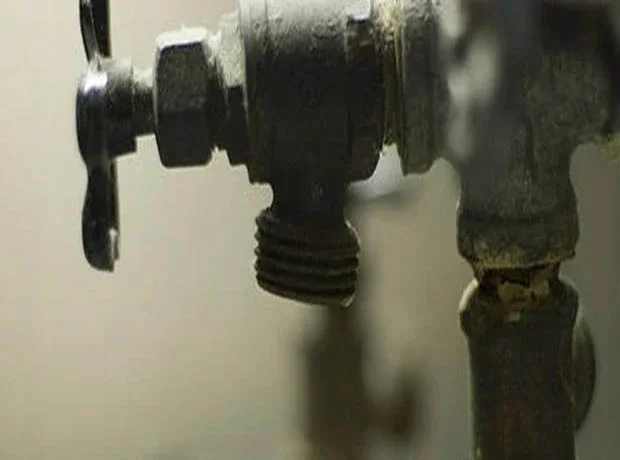Unbeknown to most, the vast, connected network of pipes, fittings and accessories all form part of your plumbing system. Everything from gas, sewer gas, water and waste from drains and gutters are all taken care of through the same system.
These same pipes are also responsible for delivering potable or drinking quality water to your home and even hydronic floor heating. Even the distribution of recycled for toilet flushing and washing machines is all now possible.
What material are plumbing pipes made from?
Generally the pipes used in most Australian domestic homes are made from copper and PVC plastics but there are still many others such as cast iron and galvanised. Plastic types now form the majority due to their superior corrosion resistance, light weight and malleability or flexibility.
What type of pipe do I choose?
Pipes come in many flavours with most being designed to suit a particular function. Its normally best practice to seek recommendation from your plumber as they poses the local knowledge needed to make an informed decision regarding soil types, conditions and water quality. An incorrectly chosen pipe can corrode faster and cause damage to your property.
Copper pipe systems and fittings
Copper pipe systems are by far the most commonly used in Australia but with many of these now approaching 50+ years, most now show signs of degradation and ageing . Copper resists corrosion and is ideal for hot and cold water carriage and are connected with soldered fittings. As technology has evolved, so too have the fittings with push-fit and crimp connection systems significantly reducing the manual labour and time required to solder.
Copper can sometimes reverberate if not adequately fastened to studs and walls, even though they generally require fewer fasteners, ‘water hammer’ can be an issue if not properly installed. Copper can also suffer from electrolysis attach when used underground without protective sleeving- this can also lead to premature failure.
Copper offers excellent natural defence against bacteria growth and is perfect for clean drinking water. All copper sold in Australia meets strict quality standards and guidelines, make sure to ask your plumber what type they use as some imported brands do not fare so well.
Keep an eye out for green or blue tainted water if you’re using ground water (rare), this could mean extremely high PH levels or worse- consult your plumber as soon as you can
Plumbing safety
Please never consider doing it yourself when it comes to replacing copper with a plastic equivalent. You must ensure ALL earthing requirements have been checked by a licensed electrical contractor and modified if necessary. Electrocution resulting in serious injury or death may result.
Plastic pipe systems and fittings
Newer, plastic type pipes are lighter, more resistant to corrosion and have easier to connect fittings. These products come in many different ratings to suit supply type, location and water pressure.
Like batteries, differing brands and types of plastic pipe should not be mixed. This is especially important when considering renovations, extension or additions to additional supplies. Using the same brand will alleviate any warranty concerns and generally be easier to fit. Be sure to never mix fittings designed for plastic with metal types and vice versa.
Here are some of the more popular plastic pipe materials you’ll most likely encounter;
PVC (polyvinyl chloride) – Used is for carrying waste from basin outlets, sinks and toilets to the main connections at the property boundary. It is also used for conveying rainwater from the roof to a rainwater storage tank or directly to the underground drainage system.
CPVC (chlorinated polyvinyl chloride) – Used for hot and cold water, CPVC has become popular as a pipe for distributing domestic sprinkler systems within homes. It is flexible and light in weight and doesn’t support combustion.
PEX (cross-linked polyethylene) or PB (polybutylene) – These two popular materials can be used to carry both cold and hot water. Primarily used for interior plumbing in residential settings, they are very flexible and light-weight but must be protected when installed underground – although if quality brass fittings are used, they generally don’t need protection. PEX or PB piping must not be in a position that exposes it to UV rays, though some PEX pipe now meets the full requirement for UV stability.
Composite/multi-layer – these materials are composed of layers of material with unique properties. The inner and outer layer is made from high-density polyethylene and sandwiched between is a layer of aluminium. Initially used for hot and cold water installation, composite pipe is now also used for gas reticulation.
Make sure your plumber runs the first metre leading from any heat source or to manufacturer’s specification- this is regulatory requirement. This includes but is not limited to solar panel systems and hot water services.
Galvanised pipe
Galvanised or Gal type pipe is a steel product covered with an anti-corrosive zinc layer. Used until the late 50’s, this product is no longer used in domestic or commercial applications as it can react to certain minerals present in the water and prematurely corrode and or scale, further clogging the pipe.
Cast iron pipe
Cast iron is chemically treated inside and out and mainly used in commercial applications like apartments due to its excellent acoustic properties. Whilst not that common nowadays it is still considered superior in certain situations.
Vitrified clay
Clay pipes are commonly used for sewerage, storm-water and waste purposes. These are normally swapped out with the more robust PVC types when needing replacement. Normally the first thing hit when digging a hole in your back yard.
When next renovating consider routing all essential plumbing services through floors or ceilings. This will reduce acoustic transfer and ease installation. Whilst not always possible its definitely something to consider before installation.











Appreciate the article. Some nice info for the budding plumber or handy man. Cheers,
Thanks for taking the time to check out our article Ronny. Check back often as we add new content all the time.
I don’t know what kind of plumbing pipes to have installed. It makes sense that I would want to use plastic, since it’s so lightweight and flexible. The lack of corrosion is very nice, too!
Great blog. Well explained article about “Plumbing Pipe Types & Fittings”
Great blog. Well explained article about “Plumbing Pipe Types & Fittings”
Thanks for letting me know that a galvanised pipe was used until the late 50’s in commercial and residential applications and has an anti-corrosive zinc layer. It seems like it could still be used in industrial settings that use other liquids besides water. If you had a need like that you’d want to make sure to find someone who would install a galvanised pipe correctly.
Great article. Thanks for sharing this “Plumbing Pipe Types & Fittings Explained”. Much appreciated.
How do you check for high quality brass fittings
I forgot to add for the PEX piping as I want to extend my plumbing from laundry to me bbq area underground or under the decking, hot and cold. I live perth area
Hi, I am constructing my new home and it would be very helpful for me if you could advise me what type of pipe material or pipe fittings I should use in my kitchen. Thanks!
Great article with lots of good information. Great to see the different plastic pipes explained here
why is polybutylene still used in australian homes, when it has been banned in america since 1996, I know a number of ppl who have this in their homes, and have no end of trouble with it splitting and leaking
Great article on plumbing pipe and fittings. A brief and concise one.